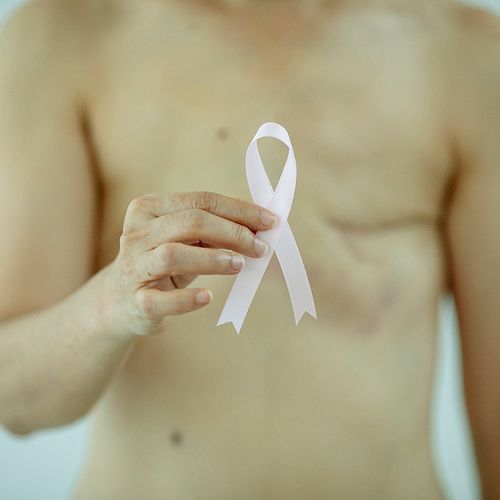Nearly one-fourth of women who opt for breast-conserving surgery instead of mastectomy as an initial treatment for breast cancer need a second surgery to ensure all of the cancer cells are removed, a recent study says.
New research has found that nearly 23% of women undergo a second procedure (medically known as re-excision), even though surgeons try to remove a clear "margin"-a thin rim of normal tissue-around the tumor to catch any stray cancer cells.
About Breast-Conserving Surgery
Breast-conserving surgery, also called partial mastectomy, is a very common choice for initial breast cancer treatment. Surgeons attempt to leave as much normal breast tissue as possible to preserve the cosmetic appearance of the breast.
The challenge is that it's very difficult for surgeons to see what's normal tissue and what's not once a tumor is removed. After surgery, a pathologist tests cells from the margin. If any are cancerous, this is known as a positive margin. If they're not cancerous, it's a negative margin.
Monica Morrow, MD, chief of the breast service at Memorial Sloan-Kettering Cancer Center in New York City, said, "You can't see where the negative margin begins when you're in surgery.
"What you take out is based on what you feel is abnormal with a margin of normal tissue around it. But, the more tissue you take out, the worse the breast looks," added Dr. Morrow, co-author of an accompanying journal editorial.
Study Details
Laurence McCahill, MD, medical director of surgical oncology at The Lacks Cancer Center in Michigan, and his colleagues included data in the study from more than 2,200 women with newly diagnosed invasive breast cancers from four areas across the country. Information about the women, whose average age was 62, came from medical records (both in-hospital and outpatient), and surgical, pathology and radiology reports.
Overall, 22.9% of the women (509) had to have at least one additional surgery on the affected breast.
Re-excision can cause additional psychological, physical and economic stress, according to the study. It can also delay the use of other therapies, such as radiation or chemotherapy.
Most of the women only needed one re-excision, but about 10% needed two or more, the researchers found. For 8.5% of the women, a total mastectomy was eventually needed.
Re-excision rates were 85.9% for initial positive margins: 47.9% for a margin of less than 1.0 millimeter (mm); 20.2% for margins of between 1 mm and 1.9 mm; and 6.3% for 2-to-2.9 mm margins, reported the study.
The researchers noted a wide variation in the re-excision rate based on surgeon and institution, but not based on the number of surgeries a particular surgeon had performed.
Results of the study were published in the Journal of the American Medical Association.
Implications
"We shouldn't have the degree of variations that we demonstrated. We need to come up with a more acceptable range," Dr. McCahill said. "I think this should be more standardized. But, the debate about whether or not just getting a negative margin is good enough has been going on for more than two decades."
Dr. Morrow said it would be very difficult to set a standard for what a particular margin in every woman should be, because there are so many variables at play.
And, she said, she doesn't think re-excision rates are a good measure of the quality of surgery you're getting. "Re-excision rates would be way down on my list of the things women need to be concerned about," said Dr. Morrow.
While the authors found wide variations in re-excision rates around the United States, whether too many or too few re-excisions are performed is still unknown.
"We don't yet have the answer as to what serves women best," said Dr. McCahill, the study's lead author. "We do know from other research that positive margins left behind have a high recurrence rate," Dr. McCahill said. "But, we don't necessarily know if re-excision makes a significant difference in outcomes."
Better Breast Cancer Treatment
An analysis of 17 randomized trials involving 10,801 women found that those who had breast-conserving surgery plus radiation had a 10-year recurrence rate of 19.3%, compared with 35% in the group that received surgery but no radiation. Risk for death after 15 years was 21.4% in the radiation group and 25.2% in the nonradiation group. This means that one death is prevented for every four recurrences.
